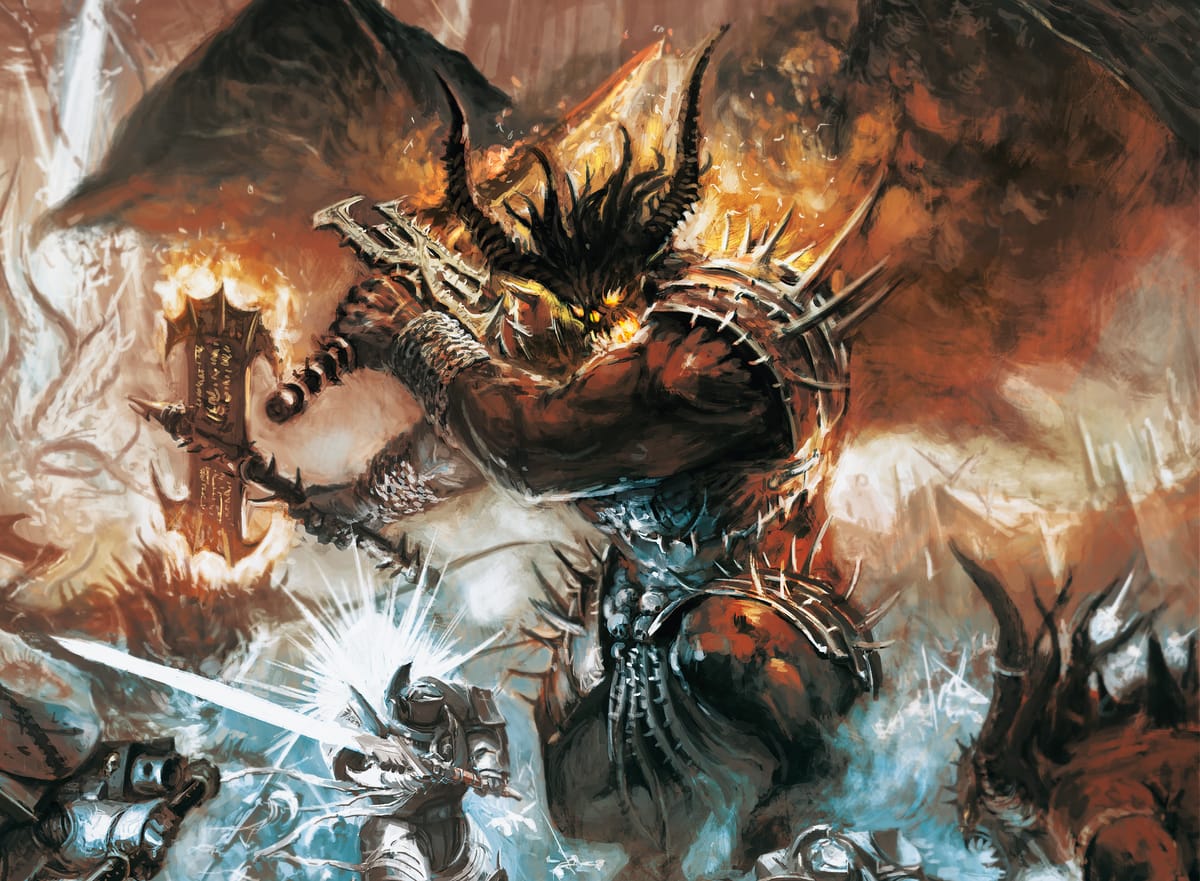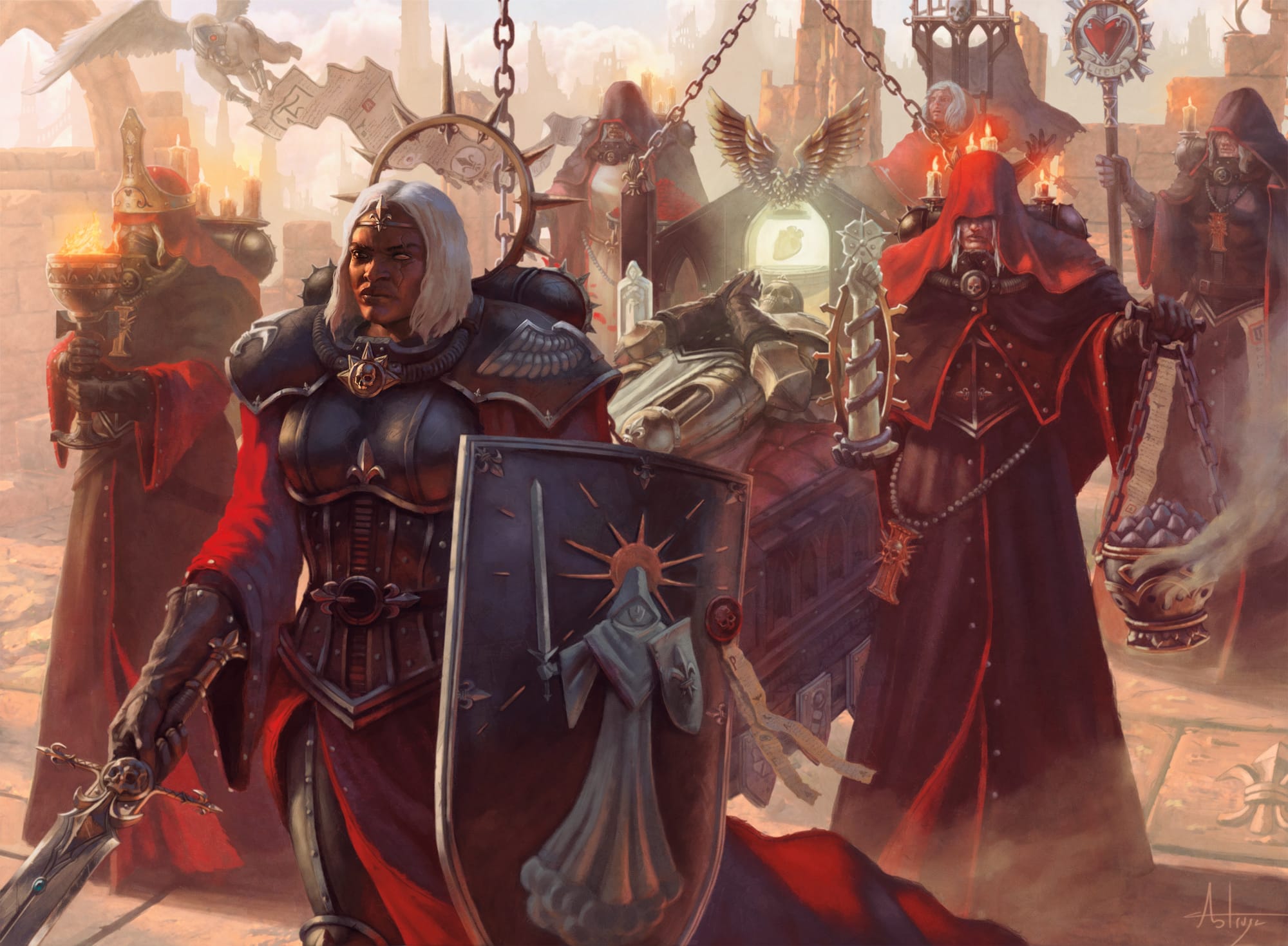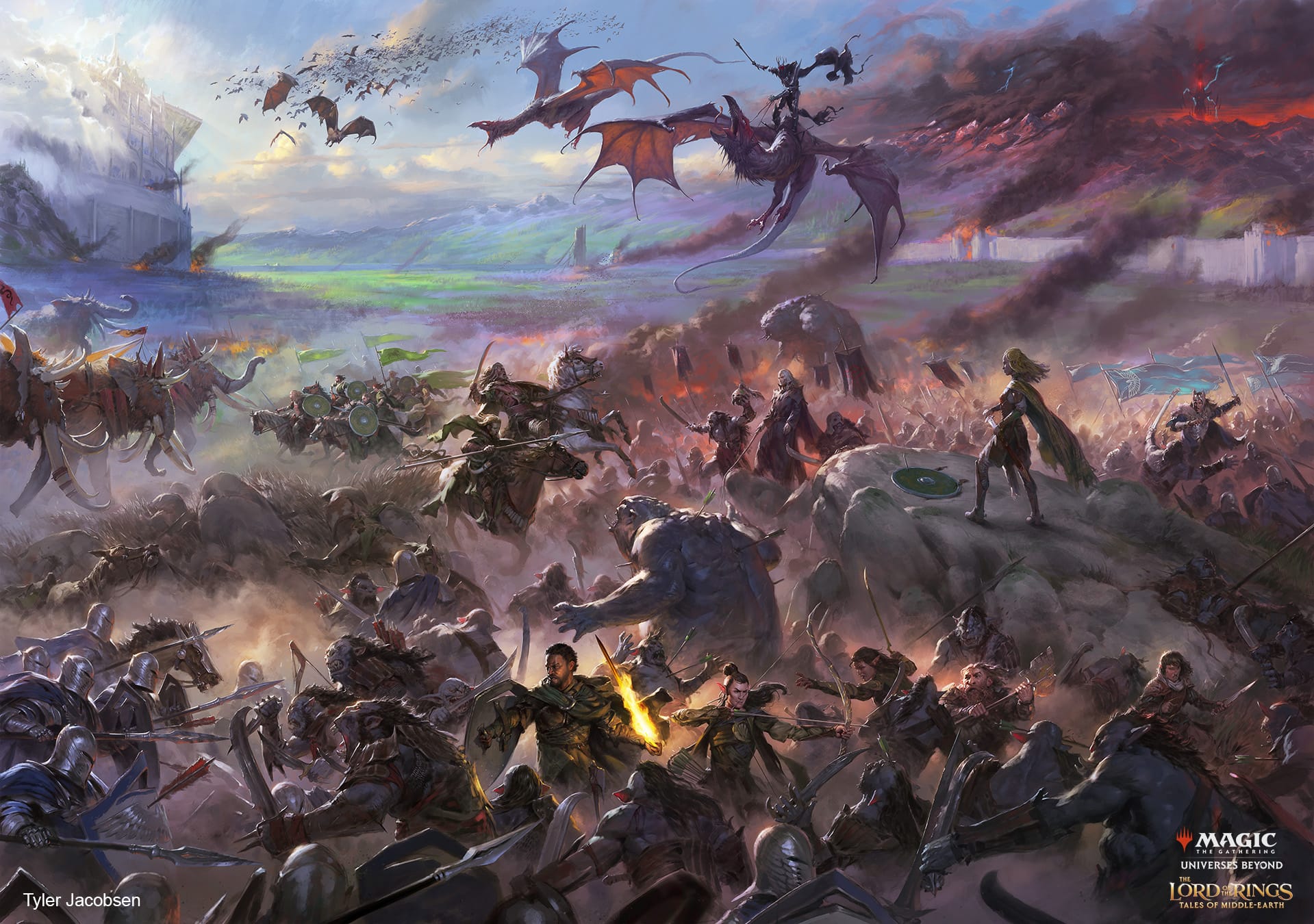
Having spent much of the past 40 years cris-crossing the planes, Magic: The Gathering is now expanding its horizons even further, setting its sights on other, familiar looking, universes. First announced in 2021, Magic the Gathering: Universes Beyond is Wizards of the Coast's strategy to introduce outside intellectual properties to the game, hopefully luring fans from far flung, disparate corners of the fantasy and science-fiction scene into the card game’s fold.
Unofficially starting with The Walking Dead in 2020, Universes Beyond has since expanded to incorporate franchises such as Fortnite, Arcane (League of Legends), Street Fighter and Stranger Things, and last year brought the grim dark Warhammer 40,000 universe to Magic. The collaboration with Games Workshop has so far spawned four prebuilt Commander decks, that spotlight some of the most iconic characters from 40K universe, such as Magnus the Red and Inquisitor Eisenhorn.
‘Working with Games Workshop was great,’ says Max McCall, Principal Product Designer at Wizards of the Coast. ‘Games Workshop is every bit as obsessed as we are with sculpting delight and joy for their fans, and collaborating with them on the Commander decks was a lot of fun.
‘Wizards employ a ton of Warhammer fans, and we hit it off right away—lots of “Hey, here’s our take on this character—what do you think?” “Oh, that’s awesome, you could even go further by emphasising this in the art or that ability word” “Oh, that’s brilliant, we’ll do that for sure!” They were lots of fun to work with.’
Fun as that does sound, when two titans of the tabletop scene like these come together, that also means two, often notoriously hard to please, audiences to contend with. Always a challenge but especially in the case of a setting as vast as Warhammer 40,000’s where it's always hard to make every fan happy, something McCall admits.
‘By far the trickiest thing about bringing Warhammer to Magic was having to pick and choose what we could include in the decks and what we’d have to leave behind. Warhammer’s lore is so rich and detailed that we knew we’d be heartbroken by some of the characters and factions we’d leave out,’ McCall reflects. ‘We went with the Imperium of Man, the forces of Chaos, the Tyranids, and the Necrons, but even within those groups, there were so many cool characters and moments we couldn’t find a card for.’
Despite these limitations, Wizards were still able to reference many of the defining events from Warhammer 40,000's history into the new Magic cards. ‘The folks at Games Workshop were great about helping us find ways to sneak new references onto cards, ‘ explains McCall. ‘Like using the fall of Cadia as the art for Past in Flames. It was super cool to work with folks so reverent of their past.’
From the hundreds of Black Library novels to the vast amounts of art produced over the years, one of the key things that Warhammer 40,000 is known for is the depth of its world building and Wizards were fully aware of the high expectations they had to meet with this project.
‘We wanted to do as much as possible to make folks feel like these Magic cards were part of the Warhammer 40,000 universe, and we knew the art was going to be a huge component of that,’ says McCall. ‘Warhammer is a totally different setting from Magic, and we wanted to make the cards feel as Warhammer as possible. Space Marines juxtaposed with Merfolk seemed too weird to us, so we knew we would want to get new art for all of the cards in the Commander Decks—even the reprints.’
With this Universes Beyond release, each Magic card comes with its own unique Warhammer 40,000 artwork to aid world building and lore from a gameplay perspective, something that is also true for the numerous reprinted cards within this release.
As Universes Beyond is designed with attracting players who are potentially new to Magic in mind, threading the needle to create easy-to-understand game pieces that also accurately represent the setting’s lore was a challenging, yet rewarding, task for McCall and his team.
‘Complexity is certainly the biggest obstacle to teaching Magic,’ admits McCall. ‘Universes Beyond is helpful in that regard – if a complicated Magic card is a reference to something that you recognise that can do a lot to help you understand it.’
McCall cites the Bloodthirster as a good example, the Greater Daemon of Khorne’s card has a ‘slightly cumbersome template, and extra combat steps that are weird for newer players. But if you know what a Bloodthirster is in Warhammer 40,000, you know this is an angry daemon that just attacks everything within reach, and that’s exactly what it does as a Magic card.’
Another great example of how the Magic team have used this power of recognition to ease new players in is with the Triumph of Saint Katherine card. A centre-piece model for the Adepta Sororitas faction in the wargame, its Magic card comes with an ability called Miracle, a nod to the powerful Miracle Dice, a feature exclusive to the Sororitas in Warhammer 40,000. These abilities may function slightly differently in their respective games, but these minor details can still help Warhammer 40,000 players familiarise themselves with how Magic works through association.

Of course this isn’t the first time that Wizards of the Coast have dabbled in collaborative releases, having cut their teeth with other Hasbro-owned IPs, such as Dungeons & Dragons and Transformers.
Whilst going forward the focus of Universes Beyond will be with non-Hasbro properties McCall looks back at the two massive D&D expansions, Adventures in the Forgotten Realms and Battle for Baldur's Gate, as a valuable exercise that taught them ‘plenty about what it means to bring Magic to a setting from another game.
‘Normally, we’re building the world as we’re building the rest of the set, and there are plenty of opportunities for the world building and the card design to riff on one another.’ he explains. ‘When the world is already built, as with D&D or Universe Beyond, we can go all out on fitting the cards and the art into that world. It’s a lot of fun.’
This coming together of universes is something that players have also readily embraced with many of those who have picked up Warhammer 40,000 cards using their existing miniatures as token game pieces to further help submerge themselves into Magic’s gameplay.
The same is true for Dungeons & Dragons, where many of D20 enthusiasts have picked up the crossover Magic cards to help illustrate their campaigns. During RPG sessions, it's now not uncommon to see a player cast Magic Missile, Fly, or Power World Kill by waving the corresponding Magic card in the air as a visual representation.
This is an under-looked aspect of these Universes Beyond collaborations, especially when the association in question is another tabletop game, and players can use Magic cards as a visual aid to improve their other game-playing experiences.
As Universes Beyond becomes an ever more expansive sub-brand of Magic it's interesting to see how Wizards approach each new set, tailoring their product strategy on the IP in question and how to best accommodate the audience. ‘We want to make the coolest stuff possible with partners whose work we adore. We do that by looking at each universe for what would be the most fun to bring to Magic. For Warhammer 40,000, that meant Commander decks to bring 40K characters from across time and space together in the same product. For Lord of the Rings, we’re excited to see and Draft with the characters from the original trilogy. We’ll keep looking at future Universes on a case-by-case basis,’ says McCall.

The next in the series, The Lord of the Rings: Tales of Middle Earth, follows this June and will become the first Universes Beyond release to receive full booster support. Before this Universes Beyond products arrived as Secret Lairs, a lucrative product that included a smattering of cards available either for a limited period or as pre-constructed decks, as seen with the Warhammer 40,000 release.
Following The Lord of the Rings will be a Doctor Who set before Final Fantasy and Assassin's Creed join the Universes Beyond lineup in 2024. Expect to see Cloud Strife or Ezio featured in countless Magic games upon release, which you could easily mistake as something from Super Smash Bros. given the assortment of characters who’ll be incorporated.
While these are the only confirmed collaborations announced so far, expect to see more announcements soon. Given the breadth and depth of Warhammer 40,000 lore and the success of last year’s Universes Beyond release it certainly wouldn't be a surprise to see a further collaboration there with the likes of the Aeldari, Orks and Tau finally rendered in cardboard form too.
Despite rumblings in the Magic community about the shift towards cross-marketing and card accessibility, it’s hard not to look at these releases and admit this approach is successfully attracting new players and growing the game. Playing Magic isn't the time-sink before a Dungeons & Dragons session anymore, nor is competitive play only seen as a meaningful way to play the game these days.
Involved as they are the Universes Beyond releases aren’t going to divert attention away from main Magic expansions such as Dominaria United or The Brothers' War, they are simply another way for players to engage with their favourite settings in another medium while also opening Magic up to new audiences.
Whether you like it or not, these new sets are re-invigorating the scene, especially casual play, and enticing Fortnite gamers, Warhammer miniature collectors, and Netflix viewers into the world of Magic: The Gathering, cultivating a whole new generation of players of the iconic trading card game.
Magic: The Gathering - Universes Beyond Warhammer 40,000 is available now
The Lord of the Rings - Tales of Middle Earth will be released this June, for more info check magic.wizards.com
This feature originally appeared in Wyrd Science Vol.1, Issue 4 (April '23)

